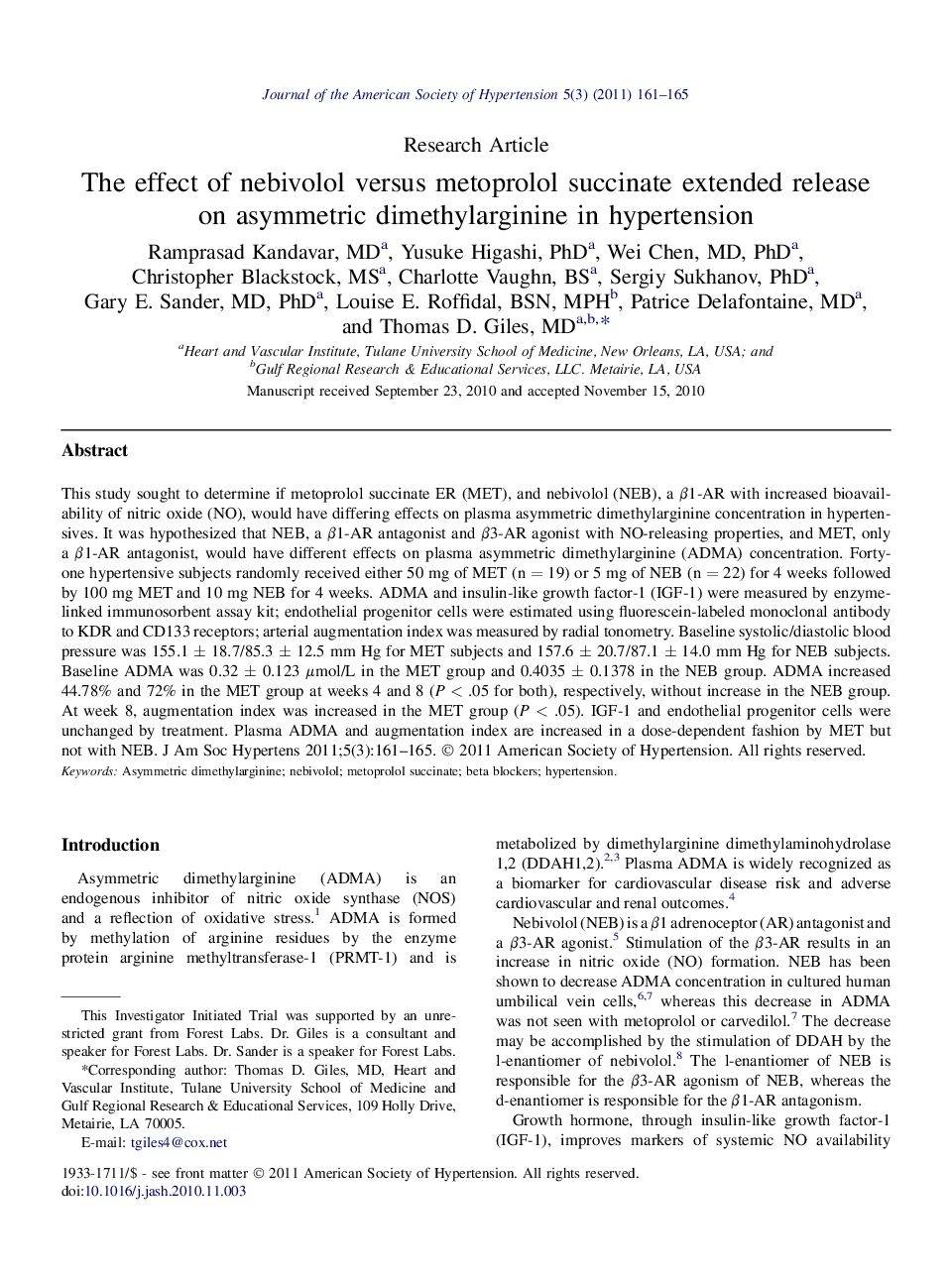| Article ID | Journal | Published Year | Pages | File Type |
|---|---|---|---|---|
| 2957084 | Journal of the American Society of Hypertension | 2011 | 5 Pages |
This study sought to determine if metoprolol succinate ER (MET), and nebivolol (NEB), a β1-AR with increased bioavailability of nitric oxide (NO), would have differing effects on plasma asymmetric dimethylarginine concentration in hypertensives. It was hypothesized that NEB, a β1-AR antagonist and β3-AR agonist with NO-releasing properties, and MET, only a β1-AR antagonist, would have different effects on plasma asymmetric dimethylarginine (ADMA) concentration. Forty-one hypertensive subjects randomly received either 50 mg of MET (n = 19) or 5 mg of NEB (n = 22) for 4 weeks followed by 100 mg MET and 10 mg NEB for 4 weeks. ADMA and insulin-like growth factor-1 (IGF-1) were measured by enzyme-linked immunosorbent assay kit; endothelial progenitor cells were estimated using fluorescein-labeled monoclonal antibody to KDR and CD133 receptors; arterial augmentation index was measured by radial tonometry. Baseline systolic/diastolic blood pressure was 155.1 ± 18.7/85.3 ± 12.5 mm Hg for MET subjects and 157.6 ± 20.7/87.1 ± 14.0 mm Hg for NEB subjects. Baseline ADMA was 0.32 ± 0.123 μmol/L in the MET group and 0.4035 ± 0.1378 in the NEB group. ADMA increased 44.78% and 72% in the MET group at weeks 4 and 8 (P < .05 for both), respectively, without increase in the NEB group. At week 8, augmentation index was increased in the MET group (P < .05). IGF-1 and endothelial progenitor cells were unchanged by treatment. Plasma ADMA and augmentation index are increased in a dose-dependent fashion by MET but not with NEB.
